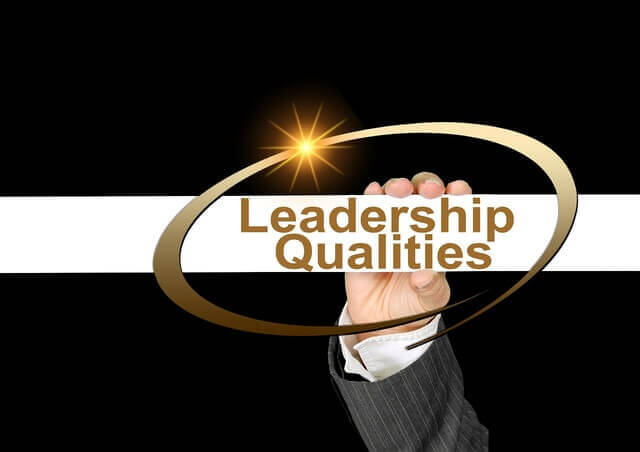Emotional intelligence (EI) is the ability to identify and manage one’s own emotions, as well as the emotions of others.
As a leader, having a high level of EI is crucial to building strong relationships, motivating and inspiring employees, and achieving success.
However, developing EI is not always easy, and it takes time and effort to master. In this article, we will explore 15 strategies for developing emotional intelligence as a leader.
Understanding Emotional Intelligence
Before we dive into the strategies for developing EI as a leader, it’s important to have a basic understanding of what emotional intelligence is.
EI consists of four core components: self-awareness, self-management, social awareness, and relationship management.
Self-awareness is the ability to recognize and understand one’s own emotions, while self-management is the ability to regulate those emotions effectively.
Social awareness involves understanding the emotions of others, and relationship management is the ability to use that understanding to build strong, positive relationships.

The Benefits of Developing Emotional Intelligence as a Leader
As a leader, developing emotional intelligence is a critical skill that can benefit you and your team in numerous ways.
Emotional intelligence refers to the ability to understand and manage your own emotions, as well as the emotions of others.
By developing your emotional intelligence, you can improve your communication, collaboration, and conflict-resolution skills, and create a more positive and productive work environment.
Here are some of the benefits of developing emotional intelligence as a leader:
Better Communication: Effective communication is essential for successful leadership. When you develop emotional intelligence, you become better at communicating with your team members.
You can understand their perspective, anticipate their needs, and adapt your communication style to their preferences.
You are also able to convey your own ideas and thoughts in a clear, concise, and respectful manner, which helps to prevent misunderstandings and conflicts.
Improved Collaboration: Collaboration is critical in today’s workplace, and emotional intelligence can help to build stronger collaborations.
By being aware of your own emotions and those of others, you can identify potential conflicts and work to resolve them before they escalate.
You can also create a culture of trust and respect, where team members feel comfortable sharing their ideas and opinions.
Better Conflict Resolution: Conflicts are inevitable in any workplace, and emotional intelligence can help you to resolve them more effectively.
By understanding your own emotions and those of others, you can approach conflicts with empathy and a willingness to find a solution that benefits everyone.
You can also identify the root cause of the conflict and work to address it, rather than just addressing the symptoms.
More Positive Work Environment: A positive work environment is essential for employee morale and productivity.
By developing emotional intelligence, you can create a more positive work environment by fostering a culture of respect, trust, and open communication.
This can lead to increased job satisfaction, higher employee retention rates, and a more engaged and motivated team.
Better Leadership: Developing emotional intelligence can make you a better leader. You are better able to inspire and motivate your team, and lead by example.
You can also build stronger relationships with your team members, which helps to create a more cohesive and productive team.
Identifying Your Own Emotions
Developing emotional intelligence as a leader starts with identifying and understanding your own emotions. This can be challenging, as many people are not used to acknowledging their emotions or expressing them in a healthy way.
However, by becoming more aware of your own emotions, you can better understand how they impact your thoughts and actions, and learn to manage them more effectively.
Here are some tips for identifying your own emotions:
Take Time to Reflect: One of the best ways to identify your own emotions is to take time to reflect on your thoughts and feelings.
This can be as simple as taking a few minutes each day to think about how you are feeling, what has caused those emotions, and how they are affecting your behavior. You can also keep a journal to track your emotions over time and look for patterns.
Pay Attention to Your Body: Your body can provide valuable clues about your emotions. When you are feeling a certain way, you may experience physical sensations such as tension in your muscles, a tightness in your chest, or a knot in your stomach.
Paying attention to these sensations can help you identify and understand your emotions.
Practice Mindfulness: Mindfulness is the practice of being fully present in the moment, without judgment.
By practicing mindfulness, you can become more aware of your own emotions and learn to observe them without getting caught up in them.
This can help you develop a greater sense of self-awareness and emotional regulation.
Use Emotional Vocabulary: Using emotional vocabulary can help you identify and describe your emotions more accurately. Instead of simply saying you are “stressed” or “upset,” try to identify the specific emotions you are feeling, such as anxiety, frustration, or disappointment.
This can help you better understand and manage your emotions.
Seek Feedback: Another way to identify your own emotions is to seek feedback from others. Ask trusted colleagues or friends to provide honest feedback about how they perceive your emotions and how they may be impacting your behavior.
This can help you gain a different perspective and identify areas for improvement.
Controlling Your Emotions
Once you have identified your emotions as a leader, the next step is to learn how to control them effectively.
This is critical for leaders, as emotions can easily impact decision-making, communication, and relationships with team members. Here are some strategies for controlling your emotions:
Take a Pause: When you feel overwhelmed by your emotions, taking a pause can be helpful. This can be as simple as taking a deep breath, going for a walk, or stepping away from the situation for a few minutes.
This can give you time to calm down and approach the situation with a clearer head.
Practice Self-Regulation: Self-regulation involves being able to manage your emotions and behavior in response to a situation.
This can include recognizing when your emotions are getting out of control and taking steps to manage them effectively.
For example, you might practice relaxation techniques, such as deep breathing or meditation, to help calm yourself down.
Use Positive Self-Talk: Positive self-talk involves using affirming statements to help manage your emotions and behavior. For example, you might tell yourself, “I can handle this situation” or “I am in control of my emotions.”
This can help you feel more confident and in control, even in challenging situations.
Seek Support: If you are struggling to control your emotions as a leader, seeking support from a coach, mentor, or therapist can be helpful.
They can provide guidance and tools for managing your emotions more effectively, and help you develop strategies for dealing with difficult situations.
Practice Empathy: Empathy involves putting yourself in someone else’s shoes and understanding their perspective. By practicing empathy, you can better understand the emotions and needs of others, and respond to them in a more effective way.
This can help build stronger relationships with team members and foster a more positive work environment.
Understanding the Emotions of Others
As a leader, understanding the emotions of others is essential for effective communication, collaboration, and building strong relationships. Here are some strategies for understanding the emotions of others:
Active Listening: Active listening involves paying close attention to what someone is saying and trying to understand their perspective.
This includes listening to their tone of voice, body language, and the emotions they are expressing.
By actively listening, you can better understand the emotions and needs of others, and respond in a more empathetic and effective way.
Practice Empathy: Empathy involves putting yourself in someone else’s shoes and understanding their perspective. By practicing empathy, you can better understand the emotions and needs of others, and respond to them in a more effective way.
This can help build stronger relationships with team members and foster a more positive work environment.
Ask Open-Ended Questions: Asking open-ended questions can help encourage people to share their thoughts and feelings. This can help you better understand their emotions and needs, and respond in a more effective way.
For example, you might ask, “How do you feel about this situation?” or “What can I do to support you?”
Practice Reflective Listening: Reflective listening involves paraphrasing what someone has said to ensure you have understood them correctly.
This can help demonstrate that you are actively listening and trying to understand their emotions and perspective. For example, you might say, “So, what I’m hearing is that you’re feeling frustrated because…”
Observe Nonverbal Communication: Nonverbal communication, such as facial expressions and body language, can provide valuable insights into someone’s emotions.
By observing nonverbal communication, you can better understand how someone is feeling, even if they are not expressing it verbally. This can help you respond in a more empathetic and effective way.
Empathizing with Others
Empathy is an essential component of emotional intelligence and is critical for effective leadership. Empathy involves understanding and sharing the feelings of others. Here are some strategies for empathizing with others:
Put Yourself in Their Shoes: To empathize with someone, you need to put yourself in their shoes and understand their perspective.
This means trying to see things from their point of view, even if you don’t agree with it. By doing so, you can gain a better understanding of their emotions and respond in a more empathetic way.
Listen Actively: Active listening is a crucial part of empathy. By paying attention to what someone is saying, and acknowledging their emotions, you can create a safe space for them to express their feelings. This can help you understand their perspective and respond in a more empathetic way.
Acknowledge Their Feelings: Acknowledging someone’s feelings is a crucial part of empathizing with them. By acknowledging their emotions, you are showing that you care about their well-being, and that their feelings matter. This can help build trust and strengthen your relationship with them.
Use Nonverbal Cues: Nonverbal cues, such as facial expressions, tone of voice, and body language, can help convey empathy. By using appropriate nonverbal cues, you can demonstrate that you are listening and that you care.
For example, maintaining eye contact, nodding, and using a calm and soothing tone of voice can help show empathy.
Avoid Judging or Criticizing: Judging or criticizing someone can undermine your efforts to empathize with them. Instead, try to remain open-minded and non-judgmental.
This can help create a safe space for them to express their feelings and enable you to respond in a more empathetic way.
Active Listening
Active listening is a vital component of emotional intelligence, and it is essential for effective leadership.
Active listening involves paying close attention to what someone is saying and responding in a way that demonstrates that you have heard and understood them. Here are some strategies for active listening:

Pay Attention: To actively listen, you need to pay attention to the person speaking. This means eliminating distractions and focusing on what they are saying.
Avoid multitasking, such as checking your phone or email, and make eye contact to demonstrate that you are fully engaged in the conversation.
Show Interest: Showing interest in what someone is saying is an important part of active listening. By asking questions and engaging in the conversation, you can demonstrate that you care about what they have to say. This can help create a more positive and productive dialogue.
Clarify and Paraphrase: Clarifying and paraphrasing what someone has said can help ensure that you have understood them correctly. By restating what they have said in your own words, you can confirm your understanding and demonstrate that you are listening.
Respond Appropriately: Responding appropriately to what someone has said is a critical part of active listening. This means responding in a way that acknowledges their feelings and shows that you have heard them.
For example, you might say, “I can understand why you would feel that way” or “That must have been difficult for you.”
Avoid Interrupting: Interrupting someone can be frustrating and can hinder effective communication. Avoid interrupting and allow the person to finish speaking before responding. This can help ensure that you have understood their point of view and can respond appropriately.
Giving and Receiving Feedback
Giving and receiving feedback is an essential aspect of emotional intelligence, and it is crucial for effective leadership. Here are some strategies for giving and receiving feedback:
Giving Feedback
- Be Specific: When giving feedback, it is essential to be specific and provide concrete examples. This can help the person understand what they need to improve and how they can do it.
- Focus on Behaviors: When giving feedback, it is important to focus on specific behaviors rather than making judgments about the person’s character. This can help ensure that the feedback is productive and not seen as an attack.
- Use “I” Statements: Using “I” statements can help ensure that the feedback is seen as constructive rather than critical. For example, instead of saying “You’re not doing a good job,” you might say “I’m having trouble understanding the point you’re trying to make.”
- Be Timely: Giving feedback in a timely manner can help ensure that the person has an opportunity to improve. It is best to give feedback as soon as possible after the behavior has occurred.
Receiving Feedback
- Listen: When receiving feedback, it is important to listen carefully and avoid becoming defensive. This can help ensure that you understand the feedback and can take steps to improve.
- Ask for Clarification: If you are unsure about the feedback you have received, ask for clarification. This can help ensure that you understand the feedback and can take appropriate action.
- Thank the Person: Thanking the person for their feedback can help demonstrate that you appreciate their input and are committed to improving.
- Take Action: Finally, it is essential to take action based on the feedback you have received. This can help ensure that you improve and can avoid making the same mistakes in the future.
Managing Conflict
Conflict is a natural part of any workplace, and as a leader, it is important to know how to manage conflict effectively. Here are some strategies for managing conflict:

- Address the Issue: When conflict arises, it is important to address the issue directly and as soon as possible. This can help prevent the conflict from escalating and becoming more difficult to resolve.
- Listen to Both Sides: It is essential to listen to both sides of the conflict to understand each person’s perspective. This can help you identify the root cause of the conflict and find a solution that works for everyone involved.
- Stay Calm: As a leader, it is important to stay calm and not become emotionally involved in the conflict. This can help you think more clearly and find a resolution that is fair and objective.
- Find Common Ground: Look for areas of agreement between the conflicting parties. This can help build a sense of common ground and reduce the tension between them.
- Brainstorm Solutions: Work with the parties involved to brainstorm possible solutions to the conflict. This can help find a resolution that works for everyone involved.
- Set Clear Expectations: Once a resolution has been reached, set clear expectations for all parties involved. This can help prevent future conflicts from arising and ensure that everyone is on the same page.
- Follow-Up: Finally, it is important to follow up with the parties involved to ensure that the conflict has been resolved satisfactorily. This can help build trust and strengthen relationships in the workplace.
Conclusion
In conclusion, emotional intelligence is a critical skill for effective leadership. Developing emotional intelligence involves understanding and managing your own emotions, as well as the emotions of others.
By practicing active listening, giving and receiving feedback, managing conflict, collaborating with others, building trust, leading with integrity, developing a growth mindset, practicing self-care, and continuously improving your emotional intelligence, you can become a more effective leader and build stronger, more successful teams.
